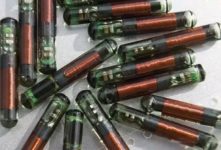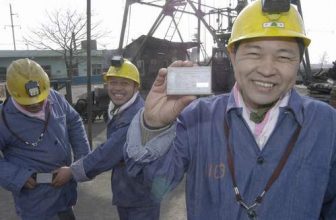
Application of RFID technology in liner cementing
[ad_1]
RFID is a method of communication using radio frequency electromagnetic fields. The information is stored in the RFID tag, and when the tag is close to the reader, the information is transmitted to the reader. There are two types of tags: one is an active tag with its own energy source, and the other is a passive tag that is charged when it is close to the reader. Passive tags are generally used in drilling and completion tools, as shown in Figure 1. The tag contains a transponder and an antenna that receives signals from the reader. The transponder has a unique identification code and reader instructions.

Figure 1 Passive RFID tag, length 0.91in, diameter 0.15in
The reader contains a receiving antenna and a power source that generates an electromagnetic field, as shown in Figure 2. When the distance to the tag is close, the magnetic field generated by the antenna charges the tag and causes the tag to transmit stored instructions. The receiving antenna can be programmed to only respond to specific tag identification codes, and tags that do not contain these identification codes will be automatically ignored when approaching the reader.

Figure 2 Passive RFID tag reader with receiving antenna and built-in power supply
(From left to right: the antenna generates the radio frequency field to read the signal of the RFID tag; the antenna charges the RFID tag; the built-in power supply)
The Tor and Hod reservoirs in the Valhall Oilfield in Norway are affected by the overlying strata, and the formation pressure suddenly drops. The use of traditional drilling techniques usually causes sticking or drilling fluid leakage, which is usually solved by liner drilling or casing drilling techniques. Cementing of this type of formation also faces greater challenges, and the use of conventional cementing methods will cause mud loss. Weatherford has designed a set of RFID cementing systems for Tor and Hod reservoirs. The cementing tools include RFID shorting with holes, casing joints that can rotate the liner during cementing, and expandable annular casing metal packing. Device. During construction, the liner is lowered into the leakage zone, the cementing is short-circuited and installed above the low pressure zone, the cement slurry is pumped to the float collar, and the packer seals the low pressure zone. RFID is used to open the perforated nipple above the low-pressure zone to pump cement slurry to avoid cement slurry leakage in the low-pressure zone. This process will not cause wellbore pressure fluctuations and successfully solve the problem of Tor and Hod reservoir cementing leakage.
RFID cementing technology can avoid pressure disturbances and maintain the integrity of the well wall in some oil fields with more complicated conditions. It can be controlled remotely or mechanically under emergency conditions, and can be widely used in narrow pressure window consolidation. Well in operation.
[ad_2]




